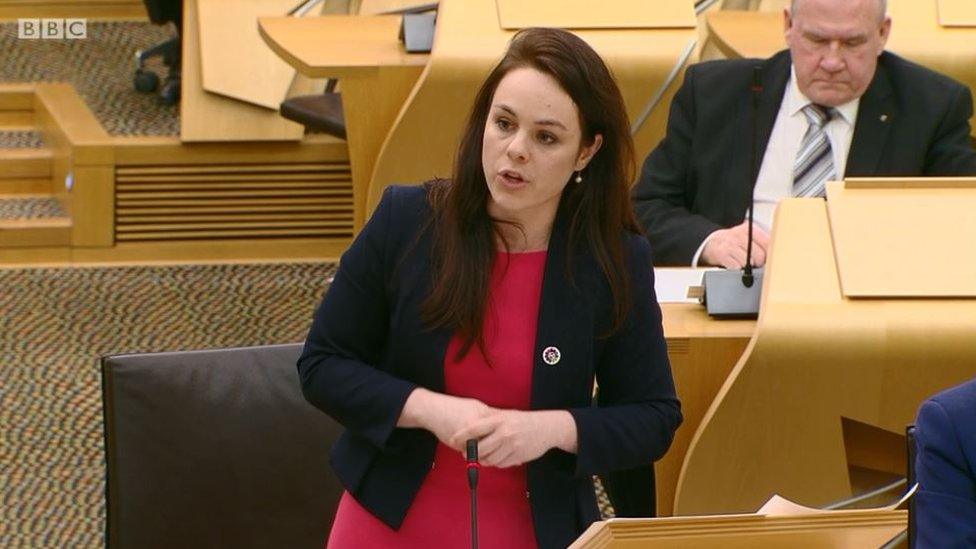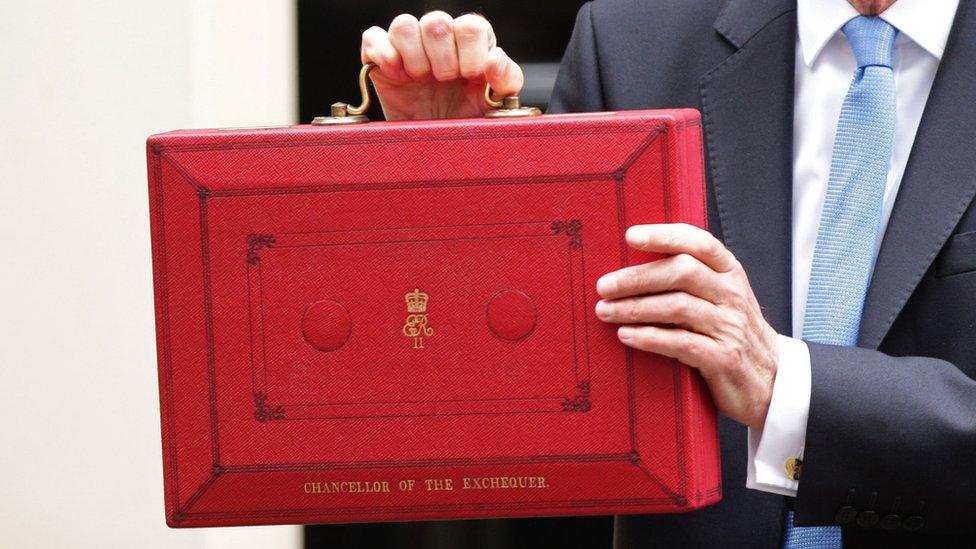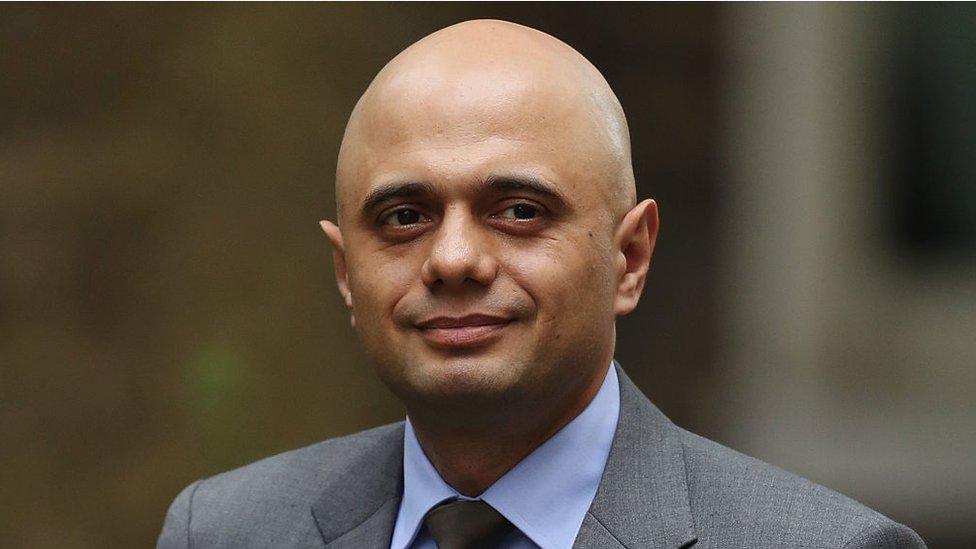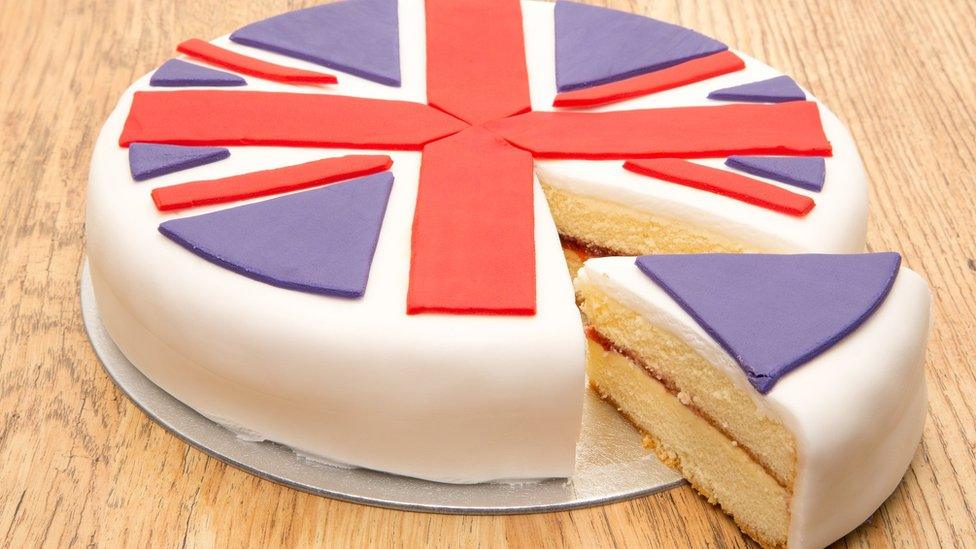Scotland set for a budget, but not as we know it
- Published

Finance minister Kate Forbes will step in to outline the Scottish spending plans
There are significant gaps in the information available to the Scottish government as it sets out his draft budget for the financial year starting in April.
The choreography of Westminster and Holyrood budgets has become ever more complex, with devolved taxation powers and the need for growth and revenue forecasts.
However, the spending taps are back on at Westminster, easing the pressure of recent years.
A deal will have to be struck with at least one other party to get the budget passed at Holyrood - and there's an election looming.
It's a budget, but not as we know it. Kate Forbes, a late replacement for Derek Mackay, will get to her feet on Thursday afternoon, with a lot of pencilling, and the hope of ink next month.
The finance minister doesn't know what size the Holyrood block grant will be for the start of April. And while forecasting income tax always requires a bit of guesswork, this time will involve more peering into the cloudy crystal ball than usual.
Why? Brexit, of course. And the change of leadership in Downing Street.
Red budget box
To explain, some history, going back 21 years. There was an intention to do Holyrood's budgeting better than Westminster's.
For most of those years, the draft budget would be set out in mid-September, and the whole of winter was available for MSPs to scrutinise each spending head in detail. That was the idea. Not everyone was impressed by the quality of their scrutiny. The finance bill was passed each year in the second half of February.
This was seen as a much smarter way of budgeting than at Westminster, where the Chancellor of the Exchequer used to appear on the steps of 11 Downing Street in March with his (there's never been a woman in that role) red Budget box, and give MPs little time to object to, or even to scrutinise, his plans for the fiscal year beginning in April.

Since the dawn of Gordon Brown's Chancellorship, the autumn statement would give some indicators of what to expect in March, though it grew into a second big budget event each year, partly to ensure the Chancellor doubled the amount of limelight while vying with Tony Blair.
That changed from 2017. Then Chancellor Phillip Hammond shifted the budget to late autumn, followed by an update in spring. Holyrood felt the need to respond.
The draft budget was moved from September, to take advantage of the higher level of spending detail with a draft budget in late November or early December. Clearly, this gives less time for scrutiny.
Splurged
And then came Boris Johnson and his Chancellor Sajid Javid. They splurged an unfunded spending announcement in September, to indicate they were for relaxing the austere restraints of their predecessors.
When Brexit didn't happen on 31 October, as planned, the November budget date was abandoned. Along came an election, and with Brexit yet to be sorted, the budget was put back to 11 March.
That's the date when Scottish councils have to set their budgets and council tax levels. So it was no longer an option for Derek Mackay to wait until Sajid Javid had declared his hand.

Chancellor Sajid Javid
There are two big numbers the Scottish government won't have. One is the block grant. Last year, that assumed a resource budget (the day-to-day or revenue costs) of nearly £28bn, adjusted downwards by nearly £12bn, which would be expected to come from income tax if Holyrood were to apply Westminster's income tax rates.
However, through devolution, Holyrood can apply its own income tax rates, so the amount raised will be different from the Westminster calculation. That forecast for income tax revenue is harder to calculate this year.
It is derived from the growth forecast by the Office for Budget Responsibility, published on Westminster's Budget day. That figure would normally feed into the economic model operated by the independent Scottish Fiscal Commission.
Moola
The SFC assesses how much the economy is expected to grow, and how much he can expect to receive in revenues for income tax, and the lesser streams of moola coming from air passenger duty, business rates, aggregates tax and the like.
Its track record at forecasting income tax revenue hasn't been all that great, largely because this stuff is new.
Because of the combined undershoot in forecasts for income tax, by both the OBR and the SFC, a new and (for now) unwelcome element of Holyrood budget is introduced this year. An adjustment is made for the undershoot three years before.

The Barnett formula helps to determine how big a slice of the UK's public spending budget each nation gets
For 2020-21, that reflects the forecast made for 2017-18, on which the Westminster block grant was based. Because it came in at less than expected, £200m will be deducted for the year beginning this April. The deduction for 2021-22 is expected to be three times as big. Eventually, with experience, forecasting should become more accurate, and revenue may sometimes overshoot forecasts.
More significant are the upwards adjustments from last September's Johnson/Javid splurge. These amount to £1.3bn more for Holyrood. More than half of that is due to higher health spending in England. There is more also for English schools, councils and police.
It's up to MSPs how that money (the jargon is Barnett Consequential) is spent in Scotland. A lot of it is likely to go to the NHS. SNP ministers won't want to be seen to be underfunding it, but nor will they want to follow precisely where Westminster goes.
Spending gaps
Politics also comes into the tax rates and thresholds. By having a budget after Westminster, Holyrood finance ministers are able to tweak numbers to make political points. With a lower starting rate for income tax, they could claim last year that Scottish income tax is lower for lower paid people.
By raising the rate and lowering the threshold on higher earners, they claimed to be more progressive, helping to plug the spending gaps left by austerity. But without knowing what Sajid Javid will do, no such claims can be made - yet.
There's another number missing from the Scottish calculations, which will have to be filled in soon. It's the voting for the budget from Holyrood's 129 MSPs.

The SNP doesn't have a majority. In recent years, it's done deals with Scottish Greens to get the budget passed.
This year could be different. Scottish Tories have put forward proposals designed to be acceptable to the SNP.
If a deal can be done, Conservatives could claim - as they have before -that they're a party of influence, and by implication, of government. They could also say they're ensuring the SNP doesn't have to go down the more radical demands being placed on it by Green MSPs.
Tories don't' even have to vote with the SNP. To save embarrassment of being associated with each other, abstaining would do the trick.
They're all keenly aware that this is the last full year of taxation and spending before the May 2021 Holyrood election. The draft budget will, almost certainly, see that long campaign step up a gear.
